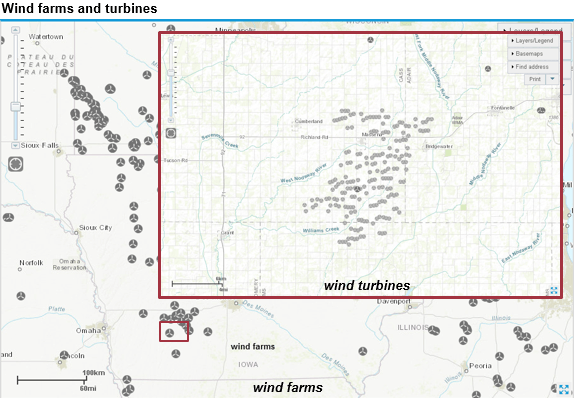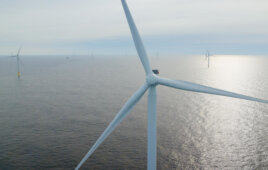The Energy Information Administration’s (EIA) U.S. Energy Mapping System is an interactive, comprehensive visual reference for energy infrastructure in the United States.

Users of the U.S. Energy Mapping System can sign up for email alerts to receive notifications of mapping system updates here.
Several layers in the system were recently updated, allowing users to see locations of several types of energy infrastructure, including wind turbines, natural gas pipelines, high-voltage electric transmission lines, natural gas pipelines, U.S. border-crossing points of electric transmission lines, and other energy infrastructure.
Most of these layers are sourced from EIA surveys or other U.S. government sources such as the Federal Energy Regulatory Commission, U.S. Geological Survey, U.S. Bureau of Ocean Energy Management, and the Homeland Infrastructure Foundation.
EIA creates some layers by compiling information from publicly available data sources. Because these sources may contain information at different scales with varying levels of accuracy, some layers, such as pipelines at border crossings, are not visible when zoomed in at closer scales.
Layers created by EIA or based on EIA surveys are also provided as shapefiles that users can combine as layers with information from other sources and can use to conduct their own geospatial analysis. In some cases, shapefiles may not be available because of copyright restrictions from the data source.
Updates to these layers also include more recent information for many of the interactive energy infrastructure maps EIA provides, which can be seen online here. EIA’s State Energy Profiles show these map layers and highlight energy facts for each of the 50 states, the District of Columbia, and U.S. Territories based on information in EIA’s State Energy Data System.
Filed Under: News, Projects




